One of the most critical skills to master in a survival situation is signaling for rescue. Whether you’re stranded in the wilderness or lost at sea, the ability to signal your location can make the difference between life and death. And when it comes to signaling, you need to know how to use a signal mirror.
To use a signal mirror, hold it close to your eye and reflect sunlight towards your target, such as an aircraft or rescue team. Move it slowly to direct the light onto the target and use short, quick flashes to create a signal that can be easily recognized.
Using a mirror during emergencies requires some expertise. If you want to know how to ask for help using signal mirrors effectively, read on.
Quick Navigation
- Choosing the Right Signal Mirror
- Locating and Aiming the Signal
- Creating a Signal
- Attracting Attention
- Simple Steps On How To Use A Signal Mirror
- Maintenance and Storage
- Additional Tips and Considerations
- Other Signaling Methods
- Conclusion
Choosing the Right Signal Mirror
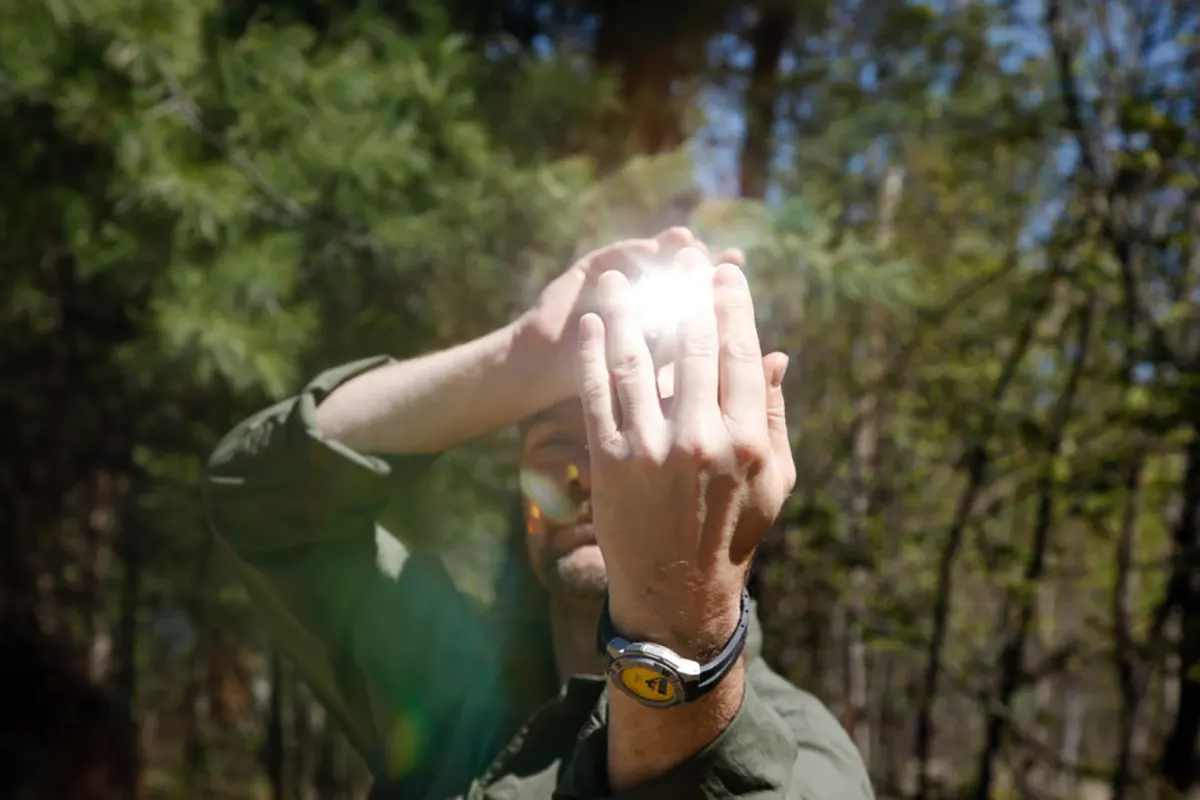
In a survival situation, having the right equipment can make all the difference. When it comes to signaling for rescue, a signal mirror is an essential tool that can help you catch the attention of rescuers from miles away.
However, not all signal mirrors are created equal, and choosing the right one can significantly impact its effectiveness. Below is a quick comparison of the different types of signal mirrors.
Types of Signal Mirrors
| Mirror Type | Size (inches) | Material | Weight | Other Features |
| Glass Signal Mirror | 2×3”3×5” | Glass | 2 oz5 oz | Doesn’t float (you may attach a floatation bobber) Has a lanyard hole Reflects light at long distances Tough, not prone to breakage or scratches |
| Plastic Signal Mirror | 2×3” | Lexan polycarbonate plastic | 0.4 oz | Has a lanyard hole Floats |
| Stainless Steel Signal Mirror | 2×1.5” | Stainless steel | Less than 1 oz | Doesn’t float Small enough to be carried around in your wallet. Has a lanyard hole |
When it comes to signal mirrors, there are three main types: glass, plastic, and stainless steel.
A glass signal mirror is the traditional choice and is known for its durability and high reflectivity. Glass mirrors are scratch-resistant and can last for many years if properly cared for. However, they are heavier and more fragile than other options, which can be a disadvantage in a survival situation.
A plastic signal mirror is a lightweight and affordable option. While they are less reflective than glass mirrors, they are still effective and can be a great choice for those on a budget or looking to minimize weight in their survival kit. However, plastic mirrors can be easily scratched, reducing their effectiveness over time.
A stainless steel signal mirror is the most durable and long-lasting option. They are highly reflective and can withstand harsh conditions without breaking or scratching. However, they are heavier than plastic mirrors and can be more expensive than both glass and plastic options.
Features to Consider
In choosing a good signal mirror, there are four important things to consider – size, retroreflective viewing hole, material, and floatability.
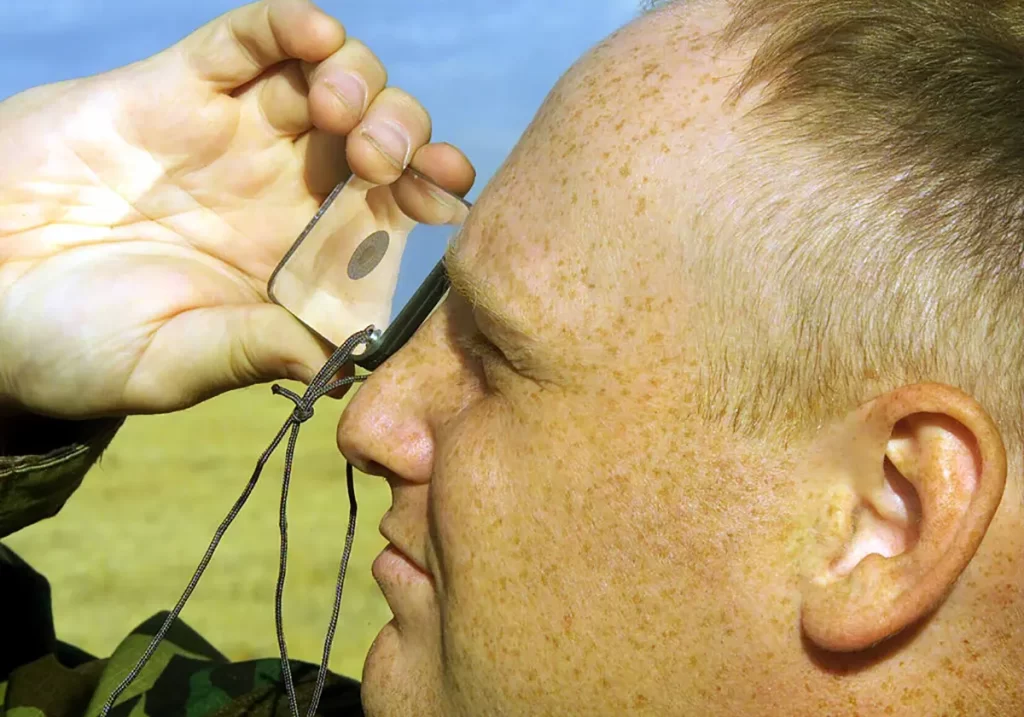
A signal mirror is a handy tool that fits comfortably in your hand. It is portable and can be kept in your wallet, bag, or first aid kit.
The ideal signal mirror has a small hole in the middle that you can peep through. The hole helps for better accuracy.
Professional signal mirrors can easily be aimed at a specific target because it is made with a special retroreflector.
A retroreflector is like a mesh screen that, when you look through it, you can see a bright spot. This bright spot is the mirror’s light beam, making aiming easier.
It is ideal that your signal mirror floats. If you carry an EDC (Everyday Carry Kit), you may have a signal mirror that doesn’t float. To make it float, you may attach floating bobbers to the signal mirror.
There are three types of materials used for signal mirrors – plastic, glass, and stainless steel. Each type has its pros and cons. It is up to the user to determine which one they prefer.
Locating and Aiming the Signal
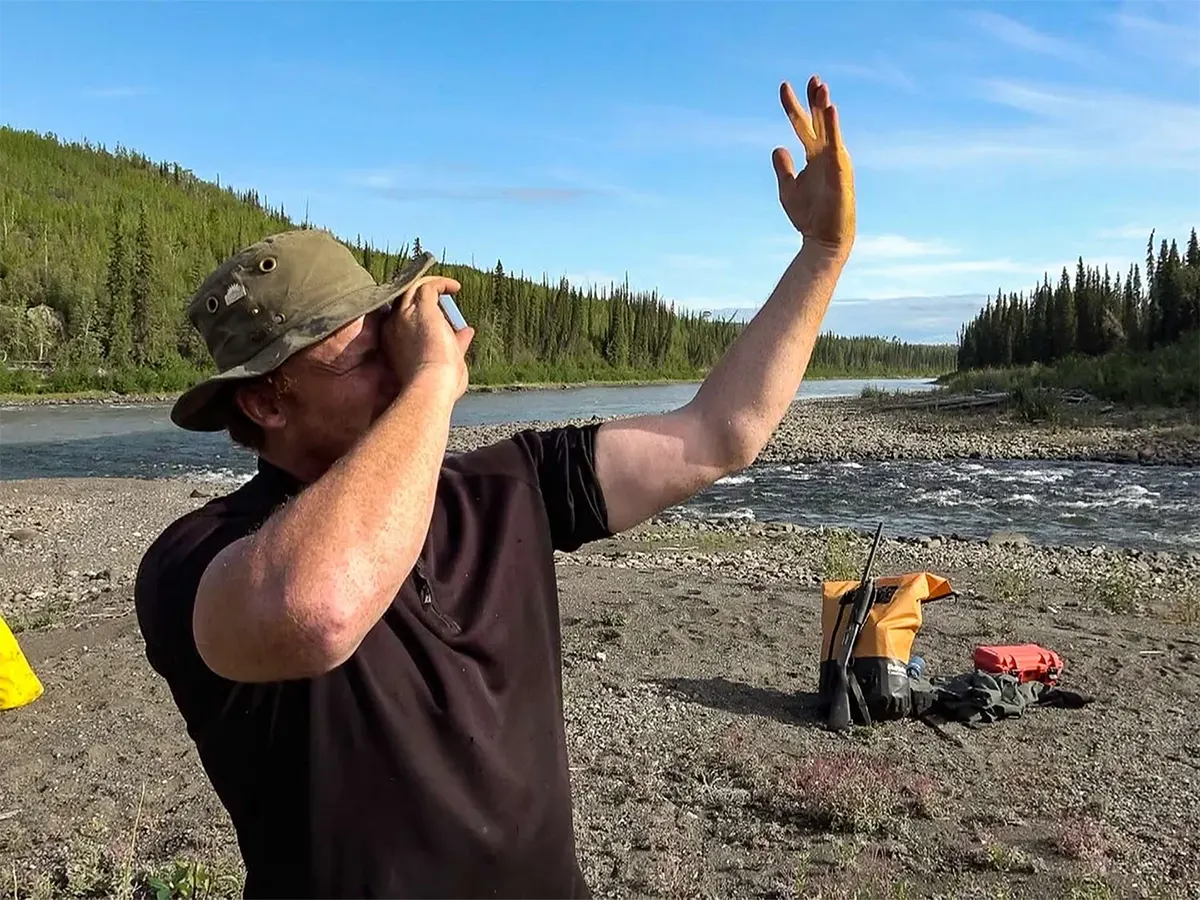
The ideal spot to use your signal mirror is an open space where sunlight is easy to reflect.
Sending a signal in a thick forest or places with a lot of visual obstacles is not a good place to use your mirror. Though, a signal mirror can still work even on cloudy days.
Positioning and Angling the Mirror
With the signal mirror in hand, hold the mirror next to your eye and face the sun. Stretch out your other hand and gradually tilt your head until you see the reflected light remains on your hand.
Next, use two spread-out fingers to create a letter V. Position the reflected light between the two distanced fingers. Allow a small portion of the reflected light to remain on your fingers as a guide to know the light is there.
When an intended target or potential rescuer is in sight, position your hand, so the target is in between two fingers and the bright light hits the target.
When you have angled the mirror and directed the light on your target, begin flashing the mirror up and down quickly, three times.
A signal mirror is helpful on a sunny day. However, when both your target and the sun are not in front of you, you will need to position yourself 90 degrees from the sun to be able to direct light accurately.
While facing the sun, you spot a target behind you, turn around, and lie down on your back.
Hold on to the mirror and keep your hand outstretched in front of you for accuracy. Then begin flashing the light to your target.
Creating a Signal
Signal mirrors are very convenient for calling for help because they are highly portable and compact.
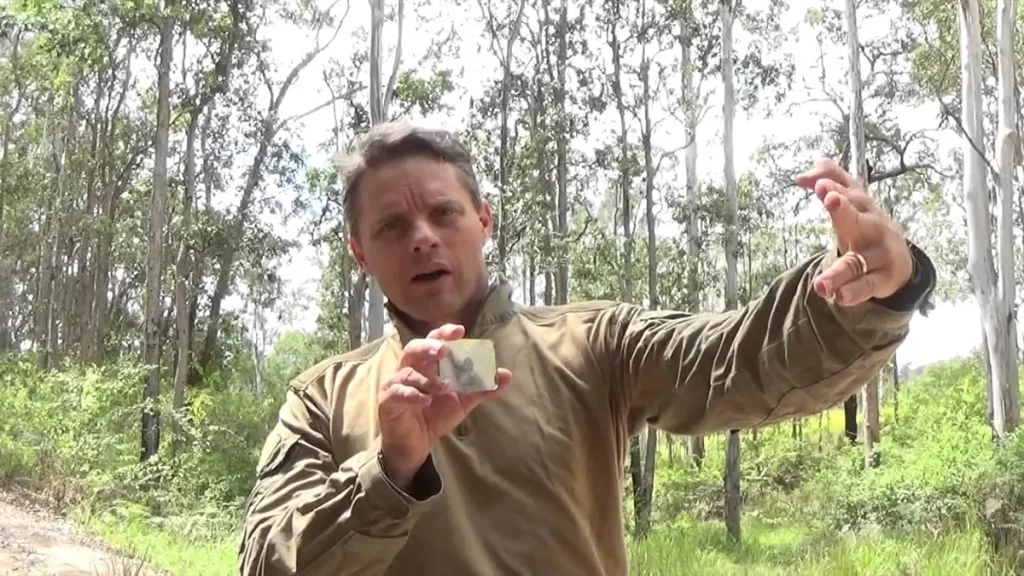
You don’t need fire to make them work. You can even use one without electricity. Plus, you can improvise if you don’t have a professional signal mirror on hand.
Apart from picking the right mirror, you should also be aware of the international distress signal in case you need help.
You can make three shots, three whistle blasts, three flashes of the signal mirror, or three burning bushes spaced apart.
When using a signal mirror, you need to have a basic understanding of reflection and light as well.
When light hits a mirror, the light is reflected at a specific angle. That is why learning how to properly aim your mirror is important to signal for help.
Attracting Attention
Knowing Your Audience
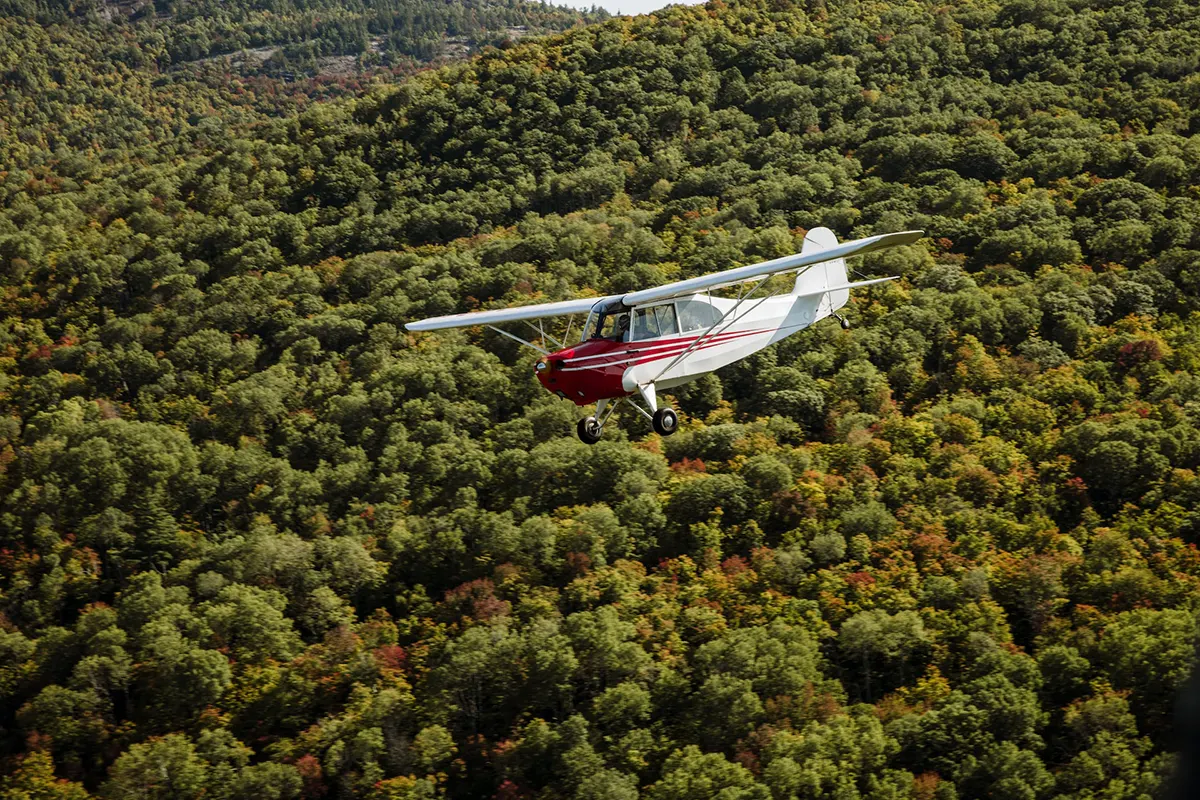
During desperate times, any aircraft or floating vessel is already a potential rescuer. You can call their attention whenever you spot one by using your signal mirror.
You can also try increasing your visibility by staying in a wide open space.
You can create a big X or SOS on the ground using branches, rocks, or any materials as long as it is visible to potential rescuers.
Simple Steps On How To Use A Signal Mirror
Creating a signal with a mirror is a simple process that can be accomplished with just a few steps:
- Hold the mirror up to your eye, making sure the reflective side is facing outward.
- Use your other hand to position the mirror so that the reflection is aimed at your target. This could be a rescue aircraft, a passing boat, or a nearby search party.
- Flash the mirror in the direction of your target, tilting the mirror slightly up and down to create a flashing effect. This will help catch the attention of the rescuers and make your signal more visible.
- Keep flashing it in the direction of the target until you see a response or until you are confident that your signal has been seen.
Remember, timing is everything when it comes to signaling for rescue, so be sure to use your signal mirror during daylight hours and when the sun is high in the sky for maximum visibility.
Maintenance and Storage
You must clean and maintain your mirror regularly. Use alcohol-based cleaners to wipe clean your mirror. Do not spray the cleaner directly onto the mirror. Just wipe it with a soft and clean cloth.
It is advisable to store mirrors dry in high-humidity areas like your bathroom. If you have glass signal mirrors, wrap them in bubble wrap once they are dry to protect them from breakage.
Additional Tips and Considerations
Importance of Practice
Before you go on your next outdoor trip, it is wise to purchase a signal mirror and practice how to use it. Go outdoors or in a wide yard to practice.
When practicing, using an inanimate object as your target is ideal. Do not aim your signal mirror at any human being, for this can cause temporary blindness and lead to accidents.
If you are already in an emergency situation, you can practice using your signal mirror while waiting for a potential rescue target, like a passing bush plane.
Instead of feeling hopeless, try to feel a sense of positivity and practice using your signal mirror.
Familiarizing Yourself With the Mirror
You will need to familiarize yourself with how to use the signal mirror. When an emergency does occur, you wouldn’t have enough time to practice. You will be too frantic to even focus on seeking immediate rescue.
Other Signaling Methods
Aside from using signal mirrors, there are alternative methods you can use to call for help.
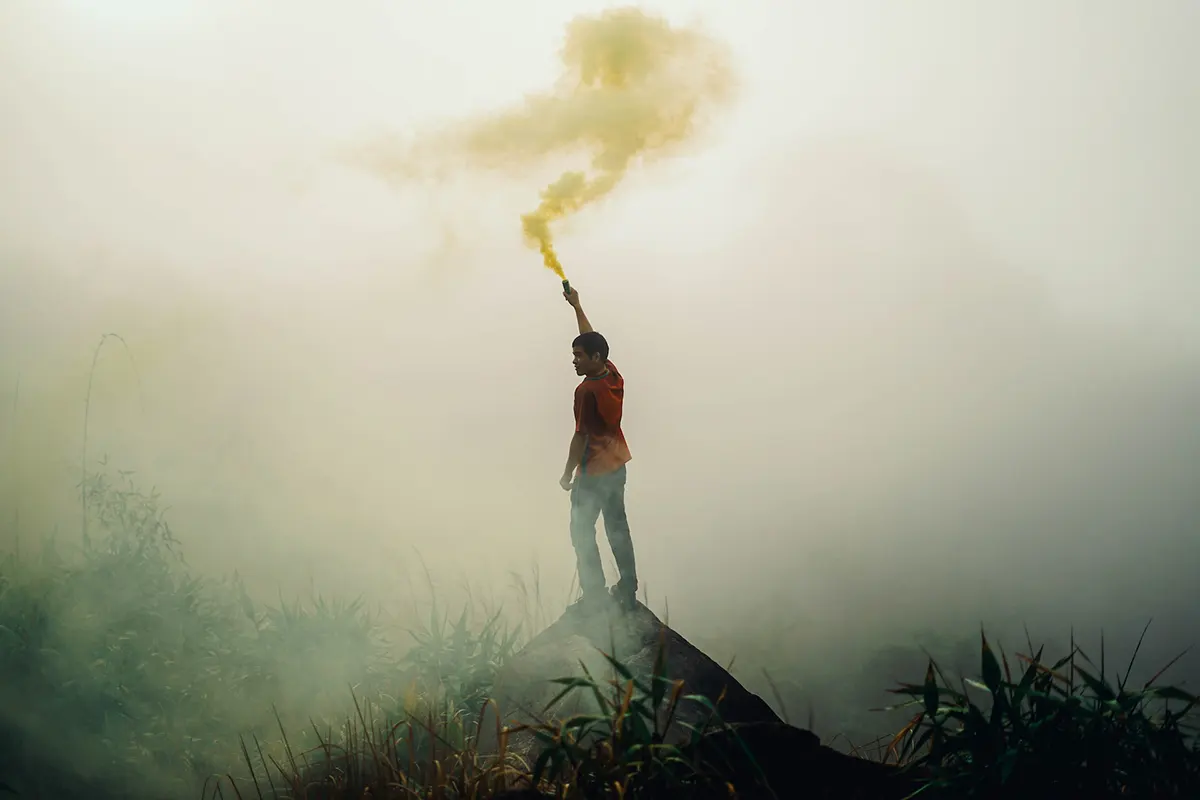
You may use the following alternative methods:
- Fire and smoke
- Whistles
- Flashlights
- Flares
- Ham radio
Safety Precautions
Avoiding Hazards While Signaling
You can avoid putting yourself in harm’s way while waiting for your rescue. Look for a stable spot to use your signal mirror.
You will need to angle your signal mirror properly, hence you will be moving around while your eyes are fixed on the target.
You may not notice that you will fall or break your angle while doing so. It is best to clear the area where you plan to do your signal.
When the rescuer is making their descent, avoid flashing reflected light on them, which can cause momentary blindness to the rescuers and could lead to another accident instead of a rescue mission.
Conclusion
Although radio transmitters are the most convenient way for rescuers and military personnel to transmit messages, signal mirrors are still highly recommended.
Mirror communication will not go obsolete. It comes in handy when a cell phone tower or a battery-operated radio transmitter is unavailable.
Signaling is an important skill that everyone must learn. Emergencies can happen anytime and anywhere.
If you have the tools for signaling and know how to use them, it can mean so much to your survival. Practice using your signal mirror before you go on your next adventure.
